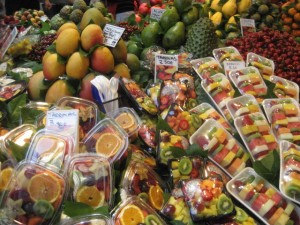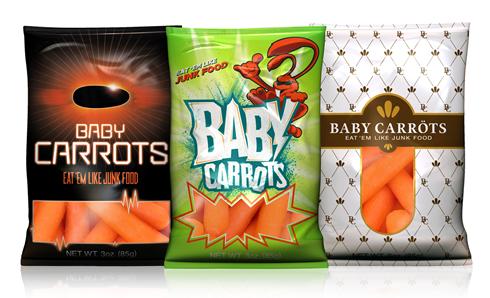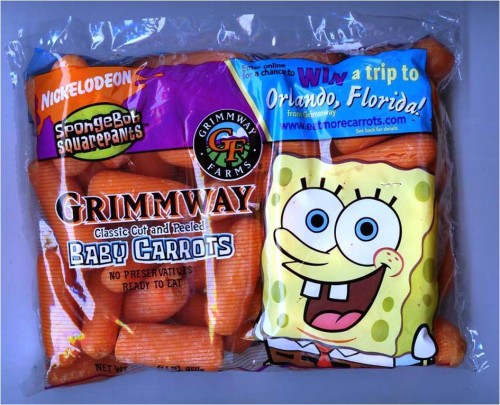Does it really cost more to buy healthy food?
I got several calls this week about a new study from the University of Washington arguing that because of the way foods are subsidized, it will cost everyone nearly $400 a year to follow the recommendations of the government’s MyPlate food guide.
The Seattle group calculates the cost of food per calorie. By this measure, the price of fruits and vegetables is exceedingly high compared to the cost of junk food. Fruits and vegetables do not have many calories for their weight.
The Commerce department tracks the indexed price of foods. Its data show that the indexed price of fresh produce increased by 40% ince 1980 whereas the price of sodas and processed foods has declined by 10-30%. (The easiest place to see their charts is in New York Times articles from a couple of years ago. Click here and also here).
USDA economists have produced a similar chart:
Other USDA economists, however, argue that price trends for fruits, vegetables, and junk foods are really no different, and that the data shown in the figure overstate the apparent difference.
Nevertheless, the Seattle paper got a lot of attention, and rightly so. One of my calls was from David Freeman of CBS News who said he was hearing lots of complaints that the study promoted a “nanny state” because it blamed bad eating habits on the government. My quotes:
“It’s a common misconception that food choices are solely a matter of personal responsibility,” Dr. Marion Nestle, professor of nutrition, food studies, and public health at New York University and an outspoken critic of the fast food industry, told CBS News. “People are hugely influenced by the price of food. If you don’t have any money and go into the store to buy some fresh fruits, you might decide that it’s cheaper to have a couple of fast food hamburgers.”
And those who can afford healthy food may lack the time or the necessary food-preparation skills, Dr. Nestle said.
Government-sponsored cooking classes and kitchen equipment may not be in the offing. But Dr. Monsivais and Dr. Nestle agreed that federal agriculture policies could do more to encourage healthy eating. For example, some of the federal farm subsidies now directed to producers of corn, soybeans, and other crops used to make fast and processed foods could be redirected to growers of fruits and vegetables.
“What’s the matter with that?” Dr. Nestle said. “I can’t think of a thing.”





